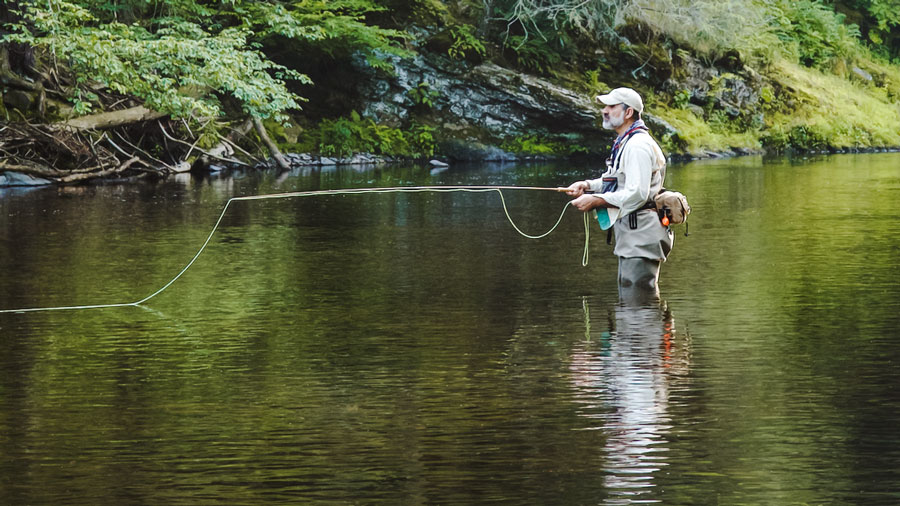
Opening day of fishing season. Shiny SUVs are parked beside beat up pickups and mud splattered Jeeps behind the local diner, where anglers stand shoulder to shoulder on the bank of the river that passes through our town. Most years, I’d remain at home during opening day; for me fishing has never been a team sport. But it has been an especially long winter, and so instead, I pass by the diner and drive out of town.
Climbing through a break in the Kittatinny foothills, I’m surrounded by wild rhododendron and mountain laurel. I pass a few vehicles parked beside the blazed path that is part of the Appalachian Trail before driving into a valley, where nearly unnoticed, a small stream slips under a bridge. I know that this little brook contains wild trout, but I drive on, turning at the next intersection, climbing up another road, this one pocked with holes and ruts. A forest of second-growth hemlocks and smaller white pine has replaced the rhododendrons and laurels. Turning again, I drive another few minutes before pulling off the road.
A crow croaks before flying from a branch of a nearby conifer while I slip a pair of hip boots over jeans and a rain jacket over a flannel shirt. After rigging my bamboo rod, I slide a tin box that contains a few flies into my chest pocket and tramp down an ill-defined trail leading to the headwaters of the little stream that I watched flow under the bridge. On my way, I notice deer scat and at least one large pile laced with seeds that I assume was left by a black bear.
Steering away from the trail, I work my way into the forest. I must navigate around, and sometimes over, large boulders laced with lichen and moss. Snow remains under the shade cast by the conifers that grow close together. I can hear the stream’s current engorged with the melting snow and spring runoff. Taking a knee, I stare down into its darkness. I choose a fly tied over the winter. It is a traditional pattern known to fly fishers as a Gold-ribbed Hare’s Ear.
It takes a number of casts to gain back the rhythm necessary to accurately place the fly upon a seam along the edge of the far bank. The branches of the hemlocks are more than willing to grab my fly, but with a short backcast I bring the little cane rod forward. The Hare’s Ear quickly sinks under the surface where it drifts with the current. Flicking the tip of the rod, I give life to the pattern, the illusion of a crippled insect. I pull back when the trout strikes. For a brief moment, I’m connected to the fish, and the stream, to the hemlock forest through which it flows, and in some small way to this crazy globe that sometimes appears to be spinning out of control. Then, having slipped the hook, the trout is gone.